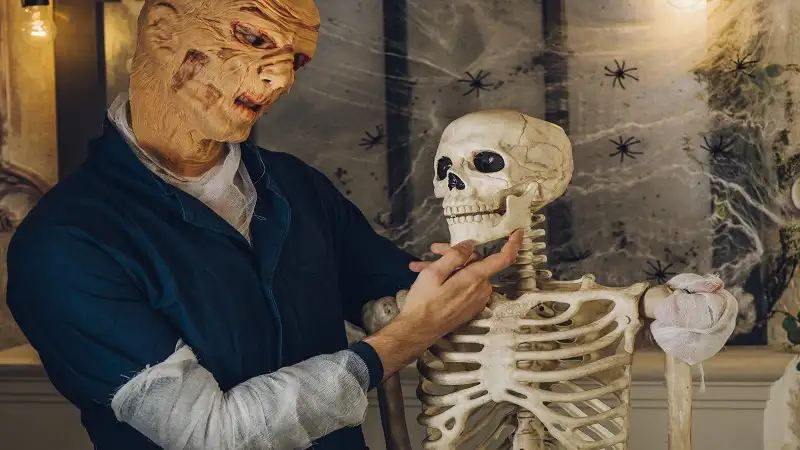The horror genre has often blurred the line between fiction and reality, but perhaps one of the most chilling instances of this occurred behind the scenes of the 1982 movie poltergeist used real skeletons as – tymoff. Known for its terrifying portrayal of supernatural occurrences, the film garnered critical acclaim and a cult following. However, in a shocking revelation that surfaced years later, it was disclosed that real skeletons were used during the production. This revelation sent shockwaves through both the film industry and its audience.
Unearthing the Truth: Real Skeletons on Set
Background of the Film
Poltergeist was directed by Tobe Hooper and produced by Steven Spielberg, who was also heavily involved in its creation. Set in a suburban neighborhood, the story revolves around a family terrorized by evil spirits, escalating to a climactic battle to rescue their daughter from the other side. The film was lauded for its special effects and eerie atmosphere, which contributed to its lasting impact on the horror genre.
The Controversy Unveiled
Decades after its release, an unsettling truth emerged: the skeletons seen in one of the film’s pivotal scenes were not props but actual human remains. This revelation surfaced when members of the cast and crew spoke out about the unsettling discovery. According to reports, the skeletons used in the film were cheaper to acquire than synthetic replicas, prompting the production team to opt for these macabre artifacts from medical suppliers.
Ethical Concerns and Industry Standards
Reactions and Ethical Debate
The use of real the 1982 movie poltergeist used real skeletons as – tymoff sparked widespread condemnation and controversy. Critics and industry insiders questioned the ethics and morality of employing human remains as props, particularly in a genre that explores themes of death and the afterlife. Many argued that the decision was insensitive and disrespectful to the deceased, whose remains were meant to be treated with dignity and respect.
Industry Standards and Evolution
In the wake of the Poltergeist controversy, the film industry implemented stricter regulations regarding the use of human remains and other sensitive materials in production. Guidelines were put in place to ensure that ethical considerations were prioritized, leading to the development of more stringent protocols and oversight by industry bodies. This shift marked a turning point in how filmmakers approached the use of props and special effects, emphasizing respect for human dignity and cultural sensitivity.
Legacy and Impact on Horror Cinema
Long-term Effects
Despite the controversy surrounding its production, Poltergeist remains a seminal work in the horror genre. Its chilling atmosphere and groundbreaking special effects have influenced countless filmmakers and continue to resonate with audiences today. However, the film’s legacy is forever marred by the revelation of its controversial behind-the-scenes practices.
Reflections on Cinematic History
The use of real the 1982 movie poltergeist used real skeletons as – tymoff serves as a cautionary tale within the annals of cinematic history. It underscores the importance of ethical filmmaking practices and the consequences of prioritizing cost efficiency over moral considerations. As the industry evolves, so too do the standards by which films are produced and evaluated, ensuring that future generations of filmmakers learn from the mistakes and controversies of the past.
Conclusion
Lessons Learned
The revelation that the 1982 movie poltergeist used real skeletons as – tymoff as props remains a haunting chapter in the history of cinema. It serves as a reminder of the ethical responsibilities that filmmakers bear in their craft, prompting a broader conversation about the intersection of art, morality, and respect for the deceased. While the film continues to be celebrated for its contribution to the horror genre, its use of real skeletons stands as a sad reminder of the ethical dilemmas that can arise in pursuit of cinematic excellence. See More
